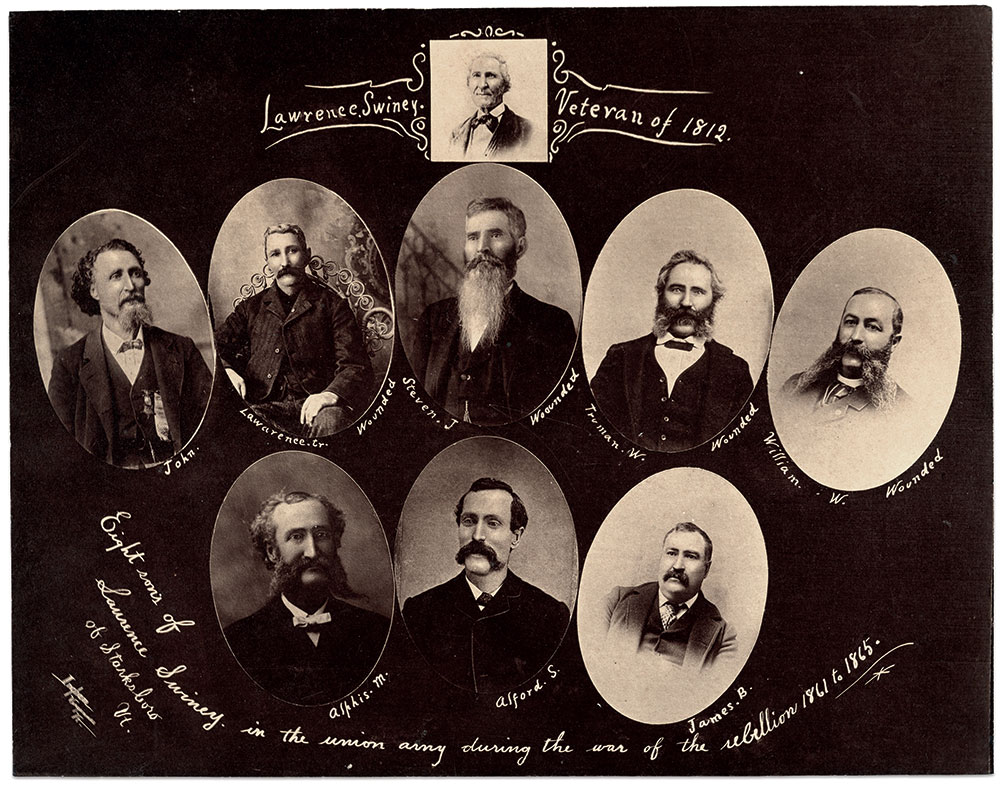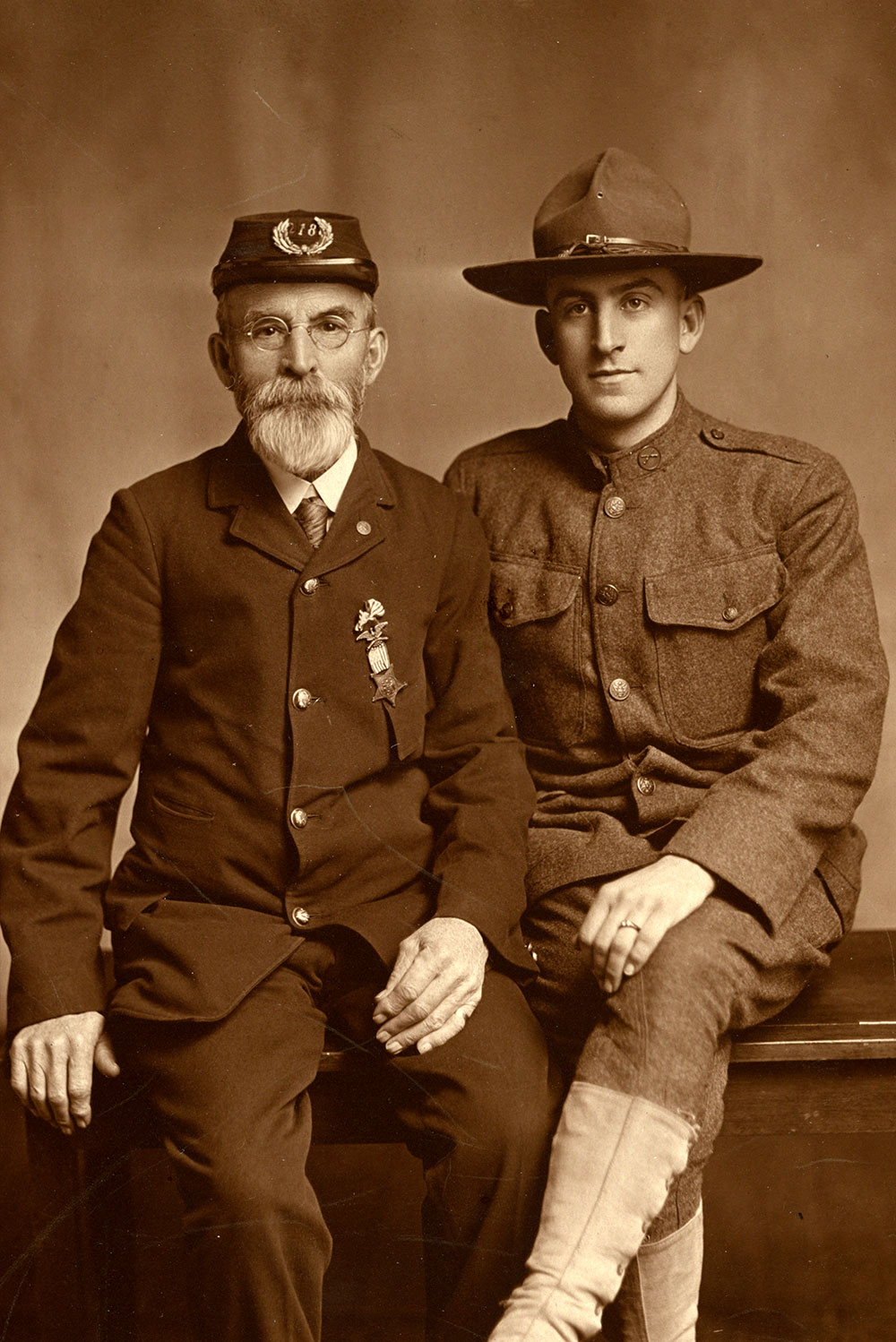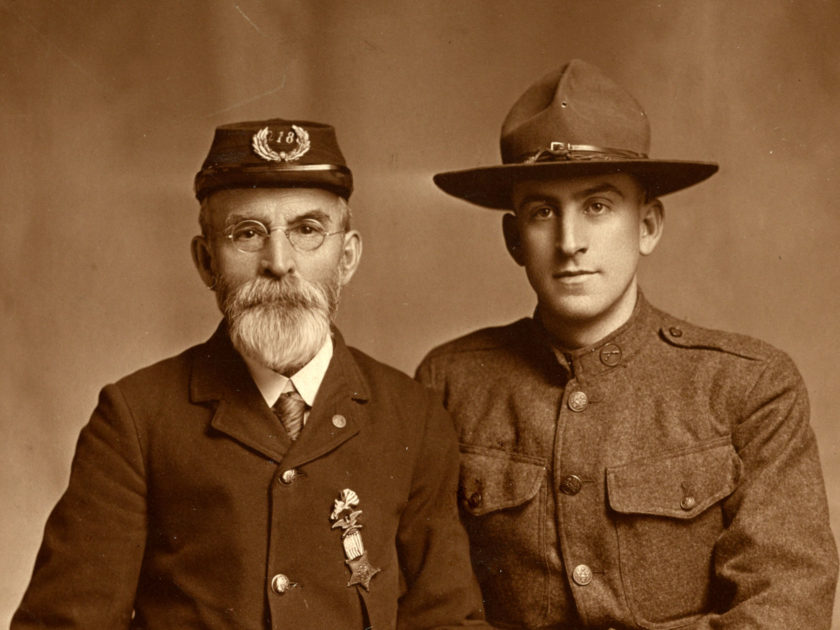By Naomi Subotnick with images from the Liljenquist Family Collection at the Library of Congress
This portrait of two men seated side by side conflates two very different worlds. On one side sits a Civil War veteran dressed in his Grand Army of the Republic uniform. Seated beside him is a much younger man, possibly his grandson, in World War I fatigues.
The hidden power of this portrait gave me pause.

I imagine the Civil War and World War I as events separated by both time and space. This photograph insisted that I confront the overlap between the two.
I found this confluence repeated elsewhere. A carte de visite depicted John L. Burns, a veteran of the War of 1812, who, at age 69, became a civilian combatant with the Union army at the Battle of Gettysburg.
The pocket-sized portrait contained layers of history—from its surface gazed not only a weathered face of the Civil War, but eyes that had seen the national struggles of decades earlier.
Sometime later, I came across a photograph of Lawrence Swinyer, also a veteran of the War of 1812, and his eight sons, all of whom had fought in the Civil War. Four sons were wounded in the war. From my studies, I had some sense of the bloody toll of the Civil War, but the photograph made those numbers personal. I understood the cost paid by one family.
I have been reflecting on the ways in which these veterans witnessed and participated in multiple historical events. Indeed, when researching these photographs, I discovered that the oldest Civil War veterans died in the 1950s.
As a student of American history, I tend to categorize events into distinct historical periods grouped by decades, symbolic moments and social movements. But as I observed these photographs, I realized that such temporal divisions are the artificial creations of historians, imposed upon the past to make it more digestible and easier to study and scrutinize. The reality is much messier, more complicated and more fluid. The Civil War did not end with the surrender of the Confederate armies––no war ends with surrender or a treaty. The veterans live on after the conflict, carrying the memory, the pain and the consequences of its events with them. A war is not an isolated or contained event—it reverberates through time long after the official documents have been signed and the troops sent home.

The past is never truly gone. We all carry our memories on to the next generation. And while much can be learned from studying the story of history from a textbook, perhaps we should also listen to those who have lived it—and continue to live it. Our past is not as far away as we might imagine.

Photography allows us to access this truth. In a photograph, the material of time melts away. Past and present coexist in a single image, whose immediacy allows us to feel almost as if we can communicate directly with the depicted person. In viewing these photographs, the past is made present.
Naomi Subotnick is a senior majoring in History at Stanford University, with a minor in Art History. She is particularly interested in race, memory, and expressions of visual culture in U.S. history. During the summer of 2017, Naomi worked as a Liljenquist fellow at the Prints and Photographs Division of the Library of Congress, where she helped to digitize, catalog, and house cartes de visite from the Liljenquist Family Collection of Civil War Photographs.
SPREAD THE WORD: We encourage you to share this story on social media and elsewhere to educate and raise awareness. If you wish to use any image on this page for another purpose, please request permission.
LEARN MORE about Military Images, America’s only magazine dedicated to showcasing, interpreting and preserving Civil War portrait photography.
VISIT OUR STORE to subscribe, renew a subscription, and more.

